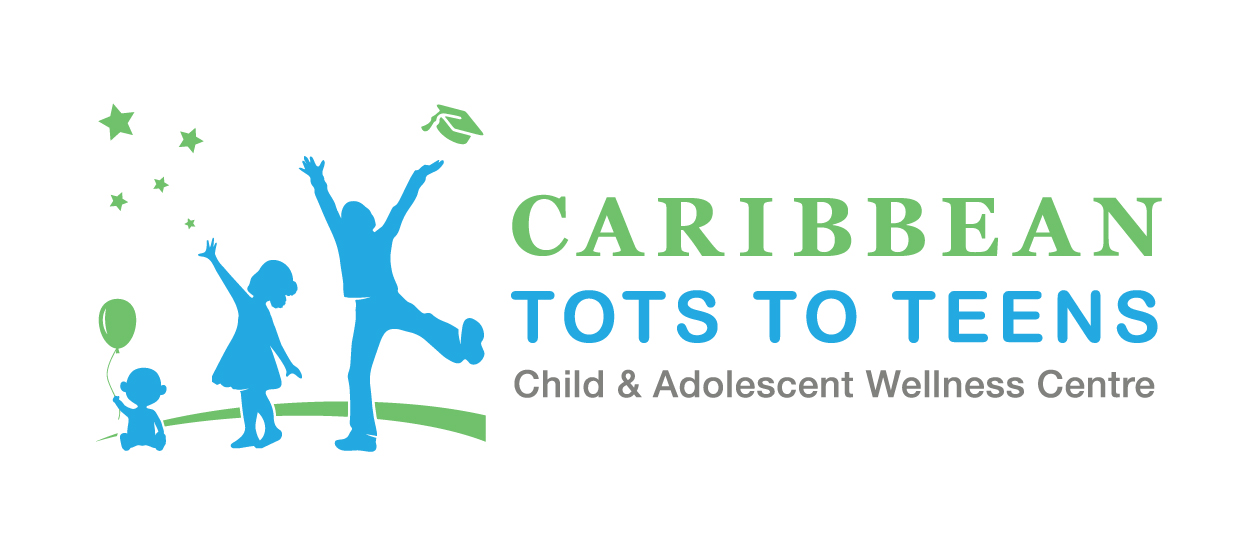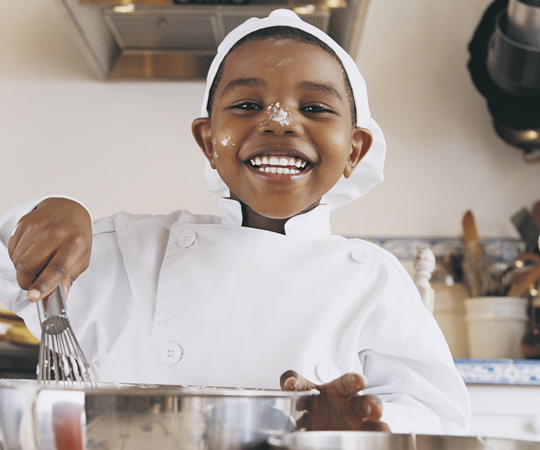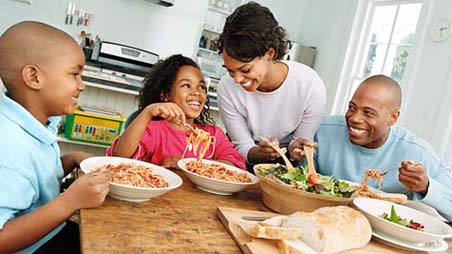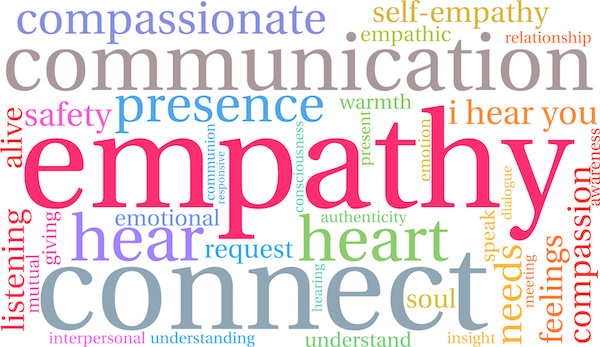Maintaining a Healthy Balance During COVID-19
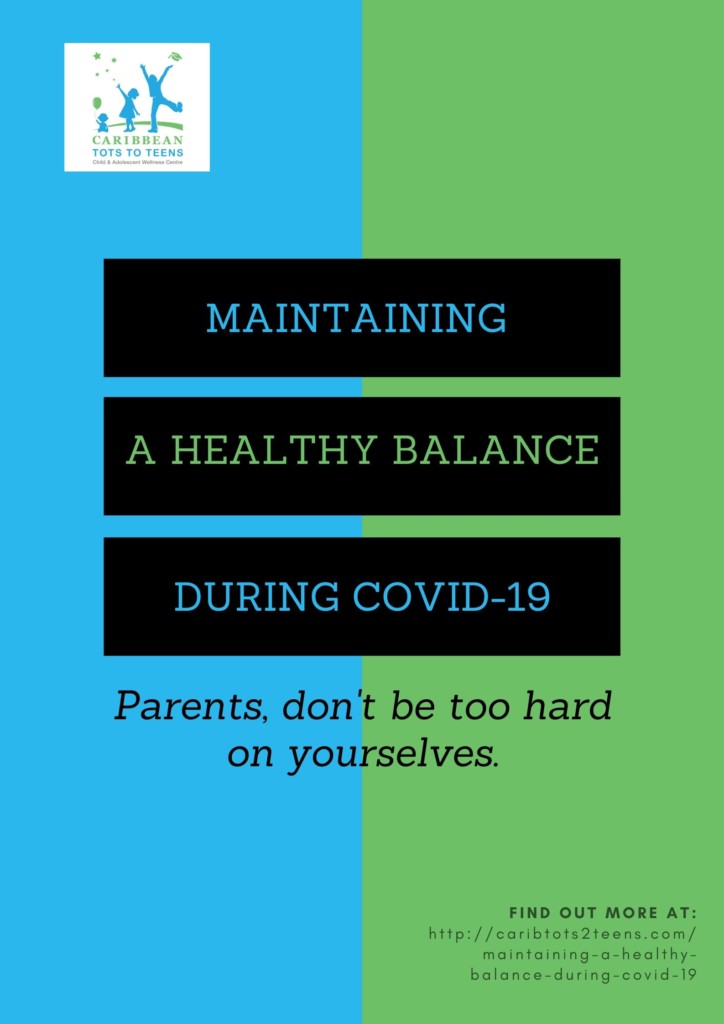
Due to the outbreak of COVID-19 parents, guardians and children are now dealing with major disruptions in their daily lives. Moving work life and school life into the home is not an easy task and can result in stressful and/or anxious feelings. In order to manage stress and anxiety remember to:
- Be aware of disruptions in your sleep pattern and eating habit, change in mood and concentration
- Take care of yourself; take breaks periodically, eat healthy and exercise
- Create supportive network with coworkers, supervisors, and family members
- Schedule activities with the family; include family relaxation time
Create a suitable environment at home that is conducive for work by:
- Ensuring a comfortable workspace within your home
- Being comfortable with yourself and wearing what makes you feel relax
- Setting schedules that are convenient for the family; taking into consideration early mornings when everyone is still asleep, when children are having lunch, or during relaxation period for children.
- Maintaining regular work schedule; avoid burnout by working extended hours at home
- Daily reflecting and reviewing what worked and what did not work, and implement the necessary adjustments
- Setting realistic expectations; you may not be able to accomplish the same goals at home as you would being in a work environment, while managing children at home and working from home
- Realizing that things will go wrong, and accidents are prone to happen; children will accidentally interrupt a meeting, the sound of the dogs barking while talking to a client, baby will get anxious and irritable. Do not be too hard on yourself
Prepared by: Camille Campbell
Adapted from: The Bellarmie University: https://www.bellarmine.edu/news/archives/2020/03/18/covid-19-expert-keim-working-from-home/
Learn MoreCoping with the Stress of COVID-19

Young children often react to their environment. As a result, they might respond to the pandemic based on the response of parents and guardians. It is very likely that if parents and guardians react to COVID-19 with a calm and confident approach (even though it might be difficult to do so), children will also adopt to this approach. In addition, parents and guardians need to be better able to communicate and interact effectively with children during this period and about COVID-19.
Here are some behavioural changes in children that parents and guardians should look out for:
- Persistent crying and irritability in toddlers
- Persistent sadness
- Disrupted eating and sleep patterns
- Developed difficulty concentrating
- Avoiding online classes and schoolwork
How can YOU offer support?
- Take the time to talk to children in a language that they can understand, based on their age and level of development
- Respond to questions honestly and factually
- Provide reassurance and validate feelings
- Be mindful of their exposure to information – limit what they hear and see from multiple sources
- Develop and implement a routine that is as close as possible to their school routine; include learning activities and relaxation activities
Lastly…
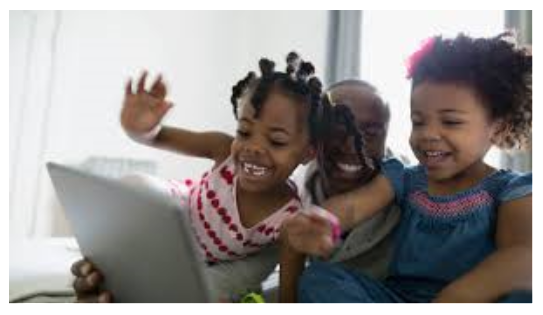
Help them maintain connection with their peers and other family members.
A few minutes of video-chat with others can be really helpful (monitor the chat, if necessary).
Prepared by: Camille Campbell
Adapted from an article by the CDC: https://www.cdc.gov/coronavirus/2019-ncov/daily-life-coping/managing-stress-anxiety.html
Learn MoreTragedy Strikes! at school – with Marie Reynolds
Shooting on the School Compound
Violent Death of a Classmate
Unexpected Tragic Loss of a Teacher’s Life
Students in the the Caribbean today face a remarkable overdose of tragedy close to home. We sat with Marie Reynolds, pediatric psychotherapist to understand more about how these events can impact children and what we as adults can do to help.
This 7 minute video is a guide to how you as the adult caring for such a child may find help and tools to help your child recover.
Managing Grief – by Janelle Reid
Grief is a natural response to loss, yet many of us are at a loss when someone around us is grieving. People of ANY AGE from toddler to ‘great grand’, experience grief. This 2 minute video is a quick guide to help to frame grief in a way that can allow you to process what is happening, and to take action if needed.
Grief can be a heavy burden, impacting every aspect of growth and development, every aspect of life. Don’t try to bear it alone. Find support, get help, you wont “get over” it , you can get stronger.
Testimonials

The range of disciplines on the team is commendable…
Marsha Gooden
What a wonderful program!
It is good that something like this is available to families who need the help.
Keep up the good help and GOD bless you!
Jamericanspice
Learn MoreI found the staff professional and kind, explaining the process to me every step of the way. I understand myself more clearly now and have begun to make positive changes in my life. There was such a high level of customer service.
Emma Scott
Study Tips – 4 Effective Strategies for Student Success | Kellie-Anne Brown-Campbell

FOUR EFFECTIVE STUDY TIPS
Study skills are not only important for GSAT, PEP, Common Entrance, 11+ or SEA (what a mouthful!) but also for the rest of a students academic career and right into college. Standardized tests -Assessments and Diagnostics – are used to measure knowledge and track progress as early as Grade 3. Primary level students must learn to develop healthy, effective and efficient study skills. These “soft skills” help with being successful on tests and exams. They will also inevitably result in reduced levels of stress and anxiety for the student. Here are four important study tips that parents, caregivers and teachers can teach children to employ on a regular basis.
Study Tip #1: Study in ‘batches’
Avoid studying too much all at once!
Despite the old adage – “the more the merrier”, when it comes to studying, too much is NOT better. If students studying for hours at a time without breaks, they will receive diminishing returns. Our brains were made to process only so much information at any one time! Taking short breaks in between study sessions, allows our brains to process, make sense of, and efficiently store the information read. This is especially true for subjects that are very loaded with content such as Social Studies, Science or Religious Education. Short breaks allow the brain to organize the material and prepares the student to retrieve this information more readily. A tired brain is not able to effectively store information in long term memory, making it harder to recall.
A Grade 6 student could study for 20 – 25 minutes with a 10 minute break away from the book with some light physical activity.
Younger students may need to use smaller blocks of time starting with 10-15 minutes in Grade 3.
Study Tip #2: Develop a consistent study routine and schedule
This tip is critical to developing organisation skills, and training the brain and body to be ready and receptive to studying. When we train ourselves to get up at the same time every morning eventually we are able to wake at the same time even without an alarm clock. In the same way we can make our brains more receptive to focused and concentrated work if we study at the same times consistently. Having a schedule that the student develops for him or herself, with the assistance of an adult, helps that student to be more organised and deliberate about studying. Additionally, it helps to develop discipline and accountability, just like when training for a sport.
Study Tip #3: Create a Low-Tech study environment
“Is low-tech possible in this technology age?!?” There is a lot of research available – for both adults and children – on how “disconnecting” helps make us more productive. How many times have you checked WhatsApp since starting to read this article? Too often we adults are “plugged in” to our phones and laptops, teaching our children that these devices are necessary appendages. Even when this does not happen at home, children see this on the television, and other daily encounters.
We have to start training our children to “disconnect” and focus on one thing at a time.
Multitasking is really a myth. When we think about, we realize that technically we cannot give our attention to more than one thing at a time. If your child is writing a composition and has the television on, whenever she looks up to watch, she has stopped working on the composition. Children may say that they can focus on more than one thing at a time, but this is neurologically impossible.
Study Tip #4: Studying and music
Many parents who I have come in contact with throughout my practice have expressed concern about their children listening to music when studying. This is not always a bad idea! But, what type of music? Research has found that more up-tempo music, without lyrics may help improve our mood when studying. Music with lyrics can be distracting. Imagine listening to Pharrell’s “Happy” while studying Social Studies – you may unconsciously break into song! Classical music and music involving sounds of nature may help to calm and relax the mood. Some strains of classical music stimulate the brain making us more receptive to learning and enhancing memory. Research has found that listening to music when doing more repetitive tasks may help us to move faster and enjoy the task more; for example, when filling out a spreadsheet. So, the point is, choice of music is key.
***
Successful students are consistent and disciplined. They make plans and hold themselves accountable. Successful students tend to be self-motivated, able to set goals for themselves and work towards their goals. Throughout the year we must encourage our students to develop healthy habits such as described in these study tips. When exams begin, our students will be in good stead for academic success. The skills instilled by consistent practice of these study tips will place students at an advantage for life.
Written by Kellie-Anne Brown-Campbell, a licensed School Psychologist who conducts educational assessments at Caribbean Tots to Teens.
Learn MoreSleep Well, Be Well | Marie Reynolds

“Sleep is the underpinning of our entire well-being. For centuries people thought that sleep was a time of inactivity that the brain was resting. But all the new science proves that the opposite is true — that during sleep the brain is in a state of intense activity, which is necessary for us to fully recharge and be productive, creative and truly connect with ourselves and others during the day.” ~ Arianna Huffington, formerly of The Huffington Post and author of The Sleep Revolution: Transforming Your Life, One Night at a Time
Every year on the third Friday of March we honor the active, important process of Sleep on World Sleep Day. In 2018 the theme was Join the Sleep World, Preserve Your Rhythms to Enjoy Life, focused on the importance of circadian rhythms in healthy sleep.
What are circadian rhythms?
The word circadian originates with the word cycle. No doubt you’re familiar with the term menstrual cycle. Well our bodies have other cycles as well: rhythms in body temperature, hormone levels and how alert we are; these are circadian rhythms. They are produced by biological clocks within our bodies. Environmental factors such as sunlight, artificial light and the blue light from TV and electronic device screens can also affect them.
Following our bodies natural rhythms is important for our physical, mental and sleep health. Unfortunately, our modern, heavily scheduled, technologically crammed lifestyle is anything but natural. Even our children may go to bed at varying times depending on the time we are able to get them home, and how much homework or other activities are on their plates. The morning commute, and an early start to the school day mean having to get them up at the crack of dawn, often with a fight because the schedule has disrupted their circadian rhythm.
Creating a Sleep Schedule
A regular schedule, including having a set bedtime and wake-up time is important for overall health and sound sleep—one of the three pillars of good health, along with a balanced diet and healthy exercise. Sleep, like exercise and nutrition, is essential for good metabolic regulation in children. Lack of sleep or poor quality sleep is known to have a significant negative impact on health in the long and short term. There is evidence of a link between length of sleep and childhood obesity— most apparent in girls— due to the effect of day-to-day variability of sleep-wake timing on weight regulation. The sleep chart below outlines the average length of sleep needed at various ages and stages of life (Courtesy of http://www.sleepaidresource.com/sleep-chart.html ).
SLEEP CHART BY AGE |
||
| Age |
Total Sleep Needed |
Additional Notes |
| 1-4 Weeks | 15-16 Hours | Newborns are developing their internal biological clocks |
| 1-4 Months | 14-15 Hours | Regular sleeping patterns begin and longer night sleeping |
| 4-12 Months | 14-15 Hours | Important to establish regular sleeping patterns at this time |
| 1-3 Years | 12-14 Hours | Naps remain important to sleep health |
| 3-6 Years | 10-12 Hours | Naps will become shorter |
| 7-12 Years | 10-11 Hours | Bedtime gets later |
| 12-18 Years | 8-10 Hours | Teens may need more sleep |
| Adults | 7-8 Hours | Times will greatly vary |
Quality of sleep is just as crucial as length of sleep. Believe it or not, some of the most important work that your child’s brain can do for their intellectual, emotional and physical well-being takes place while your child is asleep! Breathing regularly during sleep is critical to maintaining well-being and health. One of the most common issues affecting children’s sleep is poor breathing due to issues such as enlarged adenoids, sleep apnea (the interruption of the breathing function during sleep), sinusitis, and even nasal allergies. If you think your child may be affected, consult your doctor for referral to an appropriate specialist.
Whatever the cause, poor quality sleep may have a negative effect on your child’s attention span, memory recall, and learning. Behaviors and emotions are also affected. For example, some children suffering from poor quality sleep show symptoms that mimic ADHD. Regular, quality and restorative sleep may just be the prescription for your child’s irritability, hyperactivity, moodiness, or anxiety.
The bottom line is that healthy sleep will improve children’s overall wellness and development. The World Sleep Society has created the 10 Commandments of Sleep Hygiene for Children [Ages birth to 12 years] (See below) The number one tip for good sleep health is establishing a nightly bedtime routine that could include:
BEDTIME ROUTINE
- Have a light snack
- Take a bath or have a warm shower
- Put on pajamas
- Brush teeth
- Read a bedtime story
- Say prayers
- Make sure the room is quiet and at a comfortable temperature
- Tuck child in bed
- Say goodnight and leave
Here are all ten of the 10 Commandments of Sleep Hygiene for Children:
10 Commandments of Sleep Hygiene for Children
- Go to bed at the same time every night, preferably before 9:00PM.
- Have an age-appropriate nap schedule.
- Establish a consistent bedtime routine.
- Make your child’s bedroom sleep conducive – cool, dark, and quiet.
- Encourage your child to fall asleep independently.
- Avoid bright light at bedtime and during the night, and increase light exposure in the morning.
- Avoid heavy meals and vigorous exercise close to bedtime.
- Keep all electronics, including televisions, computers, and cell phones, out of the bedroom and limit the use of electronics before bedtime.
- Avoid caffeine, including many sodas, coffee, and teas (as well as iced tea).
- Keep a regular daily schedule, including consistent mealtimes.
Setting schedules for children can be difficult. Please let us know how you manage a sleep schedule in your home, in the comments below.
References
Written by Marie Reynolds a Clinical Social Worker – Paediatric Psychotherapist who offers therapy for infants and young children with their parent(s).
Learn MoreKid Chefs – 6 Tips to Getting Children Involved in the Kitchen & Eating Right | Chenell Griffiths

Kids in the Kitchen!
Getting kids involved in the kitchen is one great way in which parents can encourage their kids to eat right; let them be Kid Chefs! Kids that are involved in the meal preparation process feel encouraged to eat the meal they have helped to cooked.
However, do bear in mind that parents need to lead by example; and as such, in an effort to encourage children to eat right, parents must also eat right. Thus, meals that are prepared together (parents and their kids) should be had together. Without further ado, here are 6 tips for parents on how to get their kids involved in the kitchen, and eventually eating right:
6 Tips To Encourage Your Kid Chefs
- Ensure that you are never in a rush when cooking with children. Always be patient; you do not want them to associate meal preparation with the feeling of anxiety.
- Demonstrate kitchen safety measures and good hygiene practices. See Kitchen Safety Rules for Kids.
- Children ages 3-5 can help with
- mashing, mixing, stirring, blending,
- cracking eggs,
- using a butter knife to cut soft foods and
- washing ingredients.
In addition, children in this age group can also help with measuring and pouring. Measuring and pouring is a great time to incorporate practicing to count.
4. Children ages 6-12 can help with:
- cooking simple starches such as rice and pasta
- cutting and peeling vegetables
- separating eggs
- chopping, dicing and mincing of ingredients and also
- preparing easy breakfast items such as scrambles eggs, cereal with milk and oats porridge.
5. Have children help with age appropriate cleanup:
- children ages 3-5 can help by wiping up spills on the counter; likewise,
- children ages 6-12 can help with the washing of dishes and utensils and sweeping.
6. Finally, let your kid chefs know that they have done a good job, and thank them for helping you in the kitchen.
Though cooking with your children can get quite messy, above all, it is important to focus on the bonding experience as well as the fact that you are positively impacting their health, both physically and mentally, for the rest of their lives.
Written by Chenell Griffiths, Nutrition Educator
Learn MoreBeing Your Child’s Greatest Influence l Kellie-Anne Brown-Campbell

Parental Influence
We wanted to be “big” so much when we were growing up. We wanted to be an adult, to be able to go and do whatever we wanted to do. As girls, we dressed up in mummy’s high heels, threw scarf over our heads and pretended it was hair flowing down to our buttocks. We watched in awe as our fathers drove the car or as our mothers cooked meals. Who did we want to be like? If you think hard enough, our parents would be the answer. However, at some point, things changed. We started to look outside our homes; everyone and everything became more attractive and started to influence us. How we dressed, how we felt about ourselves, who we chose as friends, etc. Thus, as parents, how do we maintain that level of influence with our children?
Influence Through Socialization
In Sociology, the socialization of human beings is described as social agents being carried out with the family spoken to as the most influential agent of socialization during childhood. Outside of the family the other most influential social agents include school, peers and mass media. Conversely, today, social media is probably more influential than traditional media such as television and radio. Our children need the family, led by parents even more than ever before. There is significant competition happening in the world today, as so many forces (many of them negative) are now competing for control over our children’s lives. Therefore, as parents, it is critical that we find innovative and consistent ways to maintain positive influence over our children’s lives.
Influence Through Education
Being actively involved in our child’s education and school life is one of the most important ways to maintain a positive and dominant influence on them. Research has shown that when parents are involved in their child’s education, improvement in grades and test scores are seen; homework completion increases; and attitudes and behaviours towards academics and school improve. In addition, children’s active involvement in co-curricular and extra-curricular activities increases with parents involvement. Likewise, with parents active involvement in their child’s education, comes personal benefits; this has been my experience as a child, and now a parent of a young child. Conversely, teachers and administrators look out for the children of involved parents; somehow, it makes them happy to know that parents are a part of the team, and as such, they approach the education and nurturing of your child as such.
Lead By Example
In order to maintain influence over our children’s lives, it is also critical to lead by example. It’s becoming a very disappointing trend lately for adults to chastise our nation’s children about very negative and crass behavior. However, I beg to ask the question- “where did they learn these behaviours?” Evidently, the behaviours we see in our children is only a small representation of what exists in the larger society. The age old adage still applies today- “Children learn what they live, children live what they learn”. I would like to remind us of some of the words of the timeless poem by Dorothy Law Nolte, Ph.D.
Children Learn What They Live
If children live with criticism, they learn to condemn.
If children live with hostility, they learn to fight.
If children live with fear, they learn to be apprehensive.
If children live with pity, they learn to feel sorry for themselves.
If children live with ridicule, they learn to feel shy.
If children live with jealousy, they learn to feel envy.
If children live with shame, they learn to feel guilty.
If children live with encouragement, they learn confidence.
If children live with tolerance, they learn patience.
If children live with praise, they learn appreciation.
If children live with acceptance, they learn to love.
If children live with approval, they learn to like themselves.
If children live with recognition, they learn it is good to have a goal.
If children live with sharing, they learn generosity.
If children live with honesty, they learn truthfulness.
If children live with fairness, they learn justice.
If children live with kindness and consideration, they learn respect.
If children live with security, they learn to have faith in themselves and in those about them.
If children live with friendliness, they learn the world is a nice place in which to live.
Get Involved! Stay Involved!
Thus, in the spirit of the theme of Parents’ Month this November 2017, I encourage us as parents to remember that we have the greatest and hardest job of all- we have been entrusted with lives that we must see as our responsibility to mold and enhance in the best ways possible. Let us remember to encourage our children onto good works and prepare them for greatness, while teaching them about reality and the world. Let us set good examples for them to follow so that they can help to make this world a better place. GET INVOLVED! STAY INVOLVED IN THEIR LIVES! Also, remember that they are children- no matter how tenacious and precocious they may be. Remember that children are not in charge of themselves and we have to lead the charge to direct and guide them into being the best human beings they can possibly be!
Written by Kellie-Anne Brown-Campbell, Associate School Psychologist
Learn More
Empathy: What is it, what are its pros and cons, and do we all have it? | Justine East-Campbell

I’m sure many of us have grown up hearing the term, “put yourself in someone else’s shoes”. In other words, empathy involves attempts to understand someone else’s perspective or experience and how they may be feeling. However, research by Psychologist Mark Davis suggests that this is only one type of empathy. He identified three main types, including the Cognitive or Perspective-Taking type, the Personal Distress type, and Empathic Concern.
Types of Empathy
- Perspective Taking is attempting to see things from someone else’s point of view.
- Personal Distress is the type of empathy in which you actually feel the emotion that another person is feeling. For example, while watching a movie you may begin to actually feel scared, happy, sad with a character. This is because you empathize with them. I often experience this and laugh at myself for crying as if I knew the person in the show.
- Empathic Concern may be most frequently recognized as empathy. This involves identifying someone else’s emotional state, understanding it, and then feeling and demonstrating suitable concern.
How does empathy develop?
Empathy takes time to develop. Young children often express whatever pops into their head about people in their environment. These true but hurtful observations are usually shared innocently. This is because they haven’t yet formed awareness or understanding of what another person is feeling. Younger children do not know what they might feel like in a particular circumstance them self. On the other hand, newborns may trigger crying in other newborns, however this could be more of a response to noise that is uncomfortable. Besides that we see children between the ages of 1 and 2 may try to comfort someone who appears sad.
My 15 month old niece will hug her older 4 year old cousin if he’s upset or crying.
As kids get older their empathy improves. They learn from how they are treated by their parents and others. They also learn from experiencing undesirable emotions, such as being scared or upset. Children begin speaking and develop conversations at different rates. It is important to talk to them about how they might feel in a situation or how they’ve felt in a similar situation in the past.
If your daughter takes a toy away from another child without asking, ask her to think about a time in which that happened to her. Ask her how she felt.
What are some of the benefits of having empathy?
Oftentimes when working with my clients to address some form of social or familial conflict, it’s empathy that helps them to be more understanding of what the other person may be going through. They are sometimes so focused on how they feel that they don’t consider the other person until it’s pointed out to them. Besides that, with greater understanding for the other person, they are usually more open to and better able to improve the relationship or resolve the conflicts.
Empathy increases pro-social behaviour: assisting or helping other people without expecting anything in return. For example, natural disasters such as the 2010 earthquake in Haiti, Hurricane Maria and the mudslides in Sierra Leone lead to persons providing support and relief.
Empathy helps people feel connected: listened to, valued, understood, and not judged.
Positive feelings may increase because of empathy. If you are less likely to take a negative interaction personally, you may lesson feelings of aggression or distrust.
After someone hurrying by bumps into you, thinking that they may have done so because they were rushing to an interview they were trying to get for months would be empathetic and reduce the chances that you would become annoyed.
What may be some of the negatives of having empathy?
It’s possible to become overwhelmed by someone else’s feelings, especially negative ones, causing your own suffering, and affecting your mental and emotional health. For example, a study from the Pew Research Centre in 2015 that incorporated the digital age, where people often read about friends’ stressors on Facebook or Twitter, established that the problems that one person goes through can be felt by others.
- Women who saw online that an acquaintance experienced the loss of a family member had a 14 percent higher stress level compared to other women.
- Men reported a 15% higher stress level than other men if they read that a person they were close to was accused of a crime.
Both genders experienced a 9 percent heightening of their stress level when someone they knew made a post about a demotion or pay cut.
If you’re in a helping profession (e.g., nurse, doctor, psychologist) you can feel burned out or fatigued, and it could make you biased to certain persons over others.
Empathy tends to affect our judgment and moral reasoning, for example, when we have to make decisions that involve more than one person. We can neglect persons with a greater need compared to those in our social circle if we are too emotionally attached to them.
***
There are many reasons someone could have or appear to have low empathy or concern for others. Therefore, if you suspect your child or someone else has problems in this area, speak to a professional such as your child’s Pediatrician, Guidance Counsellor or a Psychologist. A psychological assessment of their behaviours can help determine the reason behind their current functioning.
Written by Justine East-Campbell, Associate Clinical Psychologist
References
American Psychiatric Association. (2013). Diagnostic and statistical manual of mental disorders (5th ed.). Washington, DC: Author.
Bloom, P. (2014). Against empathy. In Boston Review. Retrieved from http://bostonreview.net/forum/paul-bloom-against-empathy
Dallas, K. (2015). “Too much of a good thing”: When empathy is overwhelming. In Deseret News. Retrieved from https://www.deseretnews.com/article/865622445/Too-much-of-a-good-thing-When-empathy-is-overwhelming.html.
Hampton, K., Rainie, L., Lu, W., Shin, I., & Purcell, K. (2015). The cost of caring. In Pew Research Center. Retrieved September 26, 2017, from http://www.pewinternet.org/2015/01/15/the-cost-of-caring/
Kutner, L. (2016). How children develop empathy. Psych Central. Retrieved from https://psychcentral.com/lib/how-children-develop-empathy/
Riggio, R. E. (2011). Are you empathic: Three types of empathy and what they mean. In Psychology Today. https://www.psychologytoday.com/blog/cutting-edge-leadership/201108/are-you-empathic-3-types-empathy-and-what-they-mean
Stosny, S. (2013). Limitations of empathy. In Psychology Today. Retrieved from https://www.psychologytoday.com/blog/anger-in-the-age-entitlement/201302/limitations-empathy
Taylor, S. (2016). Negative empathy. Is it possible to feel too much. In Psychology Today. Retrieved from https://www.psychologytoday.com/blog/out-the-darkness/201605/negative-empathy
Learn More
